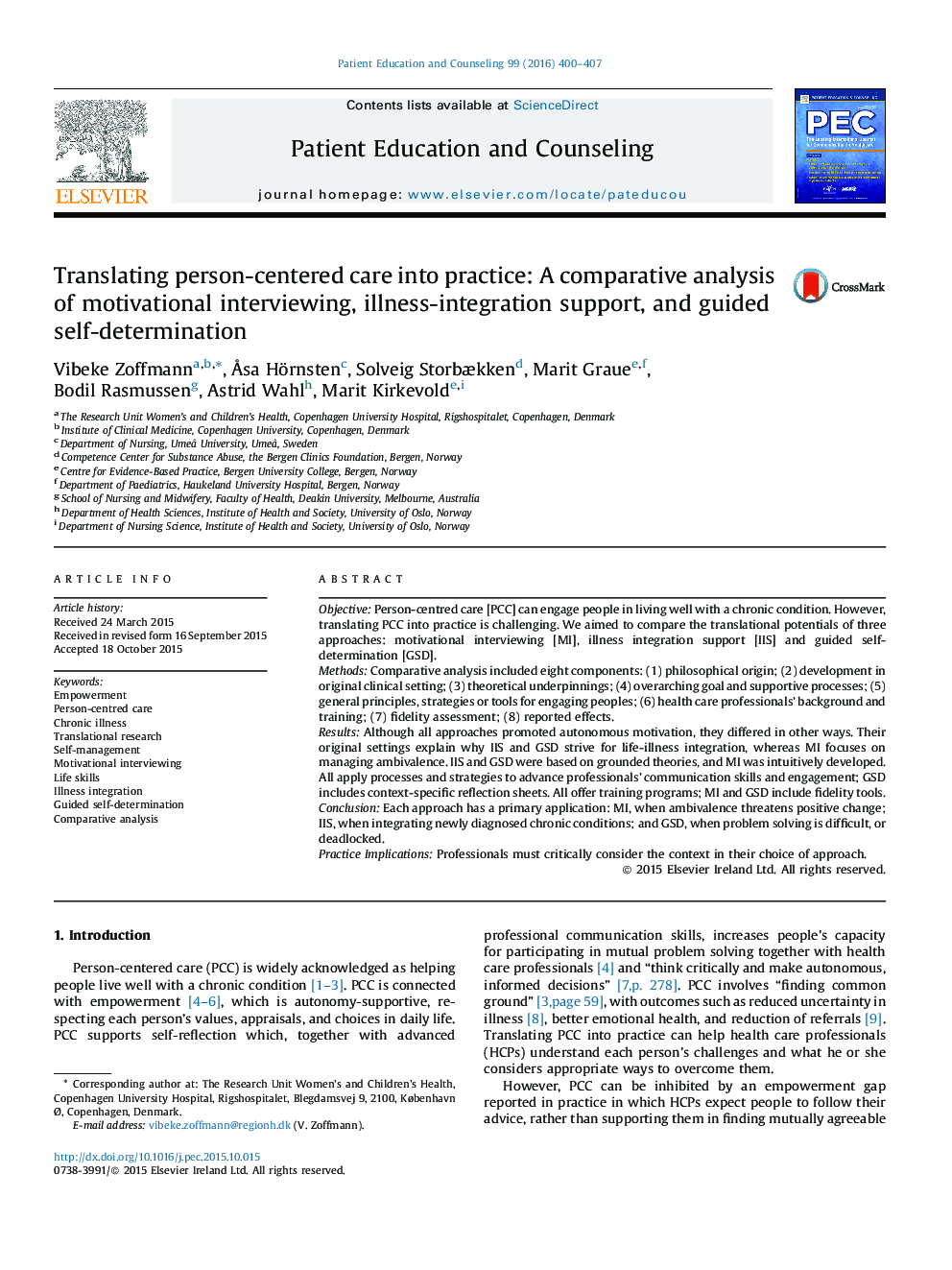| کد مقاله | کد نشریه | سال انتشار | مقاله انگلیسی | نسخه تمام متن |
|---|---|---|---|---|
| 3814640 | 1246027 | 2016 | 8 صفحه PDF | دانلود رایگان |
• Comparison of the three approaches revealed no conflicts of philosophy.
• Motivational interviewing is valuable when patients express ambivalence.
• Illness Integration support is likely to be translated into early stages of T2DM.
• Guided Self Determination is valuable when problem solving has become difficult.
• All approaches are initially challenging to perform and require training.
ObjectivePerson-centred care [PCC] can engage people in living well with a chronic condition. However, translating PCC into practice is challenging. We aimed to compare the translational potentials of three approaches: motivational interviewing [MI], illness integration support [IIS] and guided self-determination [GSD].MethodsComparative analysis included eight components: (1) philosophical origin; (2) development in original clinical setting; (3) theoretical underpinnings; (4) overarching goal and supportive processes; (5) general principles, strategies or tools for engaging peoples; (6) health care professionals’ background and training; (7) fidelity assessment; (8) reported effects.ResultsAlthough all approaches promoted autonomous motivation, they differed in other ways. Their original settings explain why IIS and GSD strive for life-illness integration, whereas MI focuses on managing ambivalence. IIS and GSD were based on grounded theories, and MI was intuitively developed. All apply processes and strategies to advance professionals’ communication skills and engagement; GSD includes context-specific reflection sheets. All offer training programs; MI and GSD include fidelity tools.ConclusionEach approach has a primary application: MI, when ambivalence threatens positive change; IIS, when integrating newly diagnosed chronic conditions; and GSD, when problem solving is difficult, or deadlocked.Practice ImplicationsProfessionals must critically consider the context in their choice of approach.
Journal: Patient Education and Counseling - Volume 99, Issue 3, March 2016, Pages 400–407
